Applying the 7 Habits of Highly Effective People: A Leadership Report
VerifiedAdded on 2023/01/17
|7
|383
|94
Report
AI Summary
This report explores the application of Stephen Covey's '7 Habits of Highly Effective People' focusing on habit 2, 'Begin with the End in Mind.' The report discusses how understanding the end goal can significantly improve decision-making and project planning. It draws from a personal experience t...
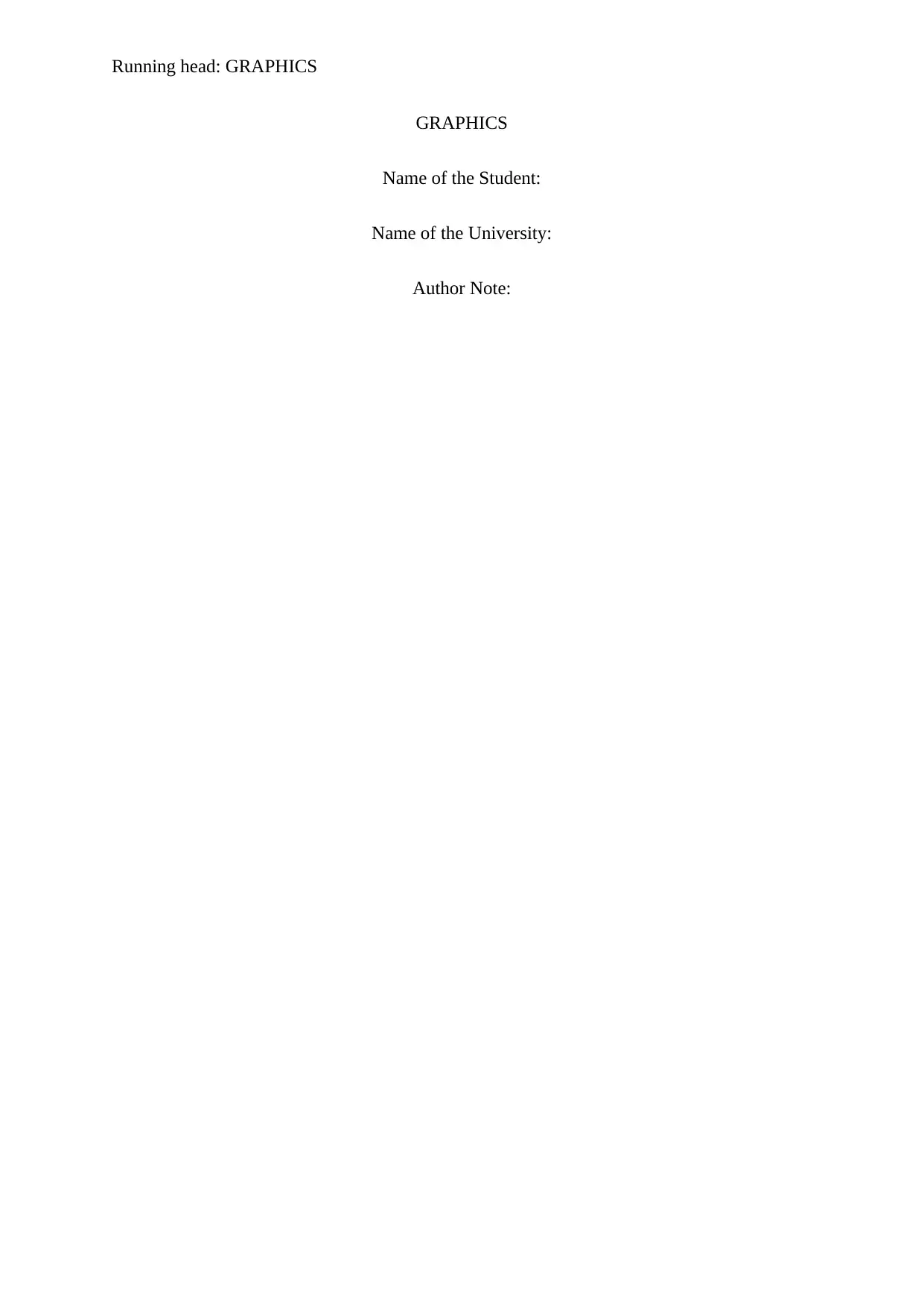
Running head: GRAPHICS
GRAPHICS
Name of the Student:
Name of the University:
Author Note:
GRAPHICS
Name of the Student:
Name of the University:
Author Note:
Paraphrase This Document
Need a fresh take? Get an instant paraphrase of this document with our AI Paraphraser
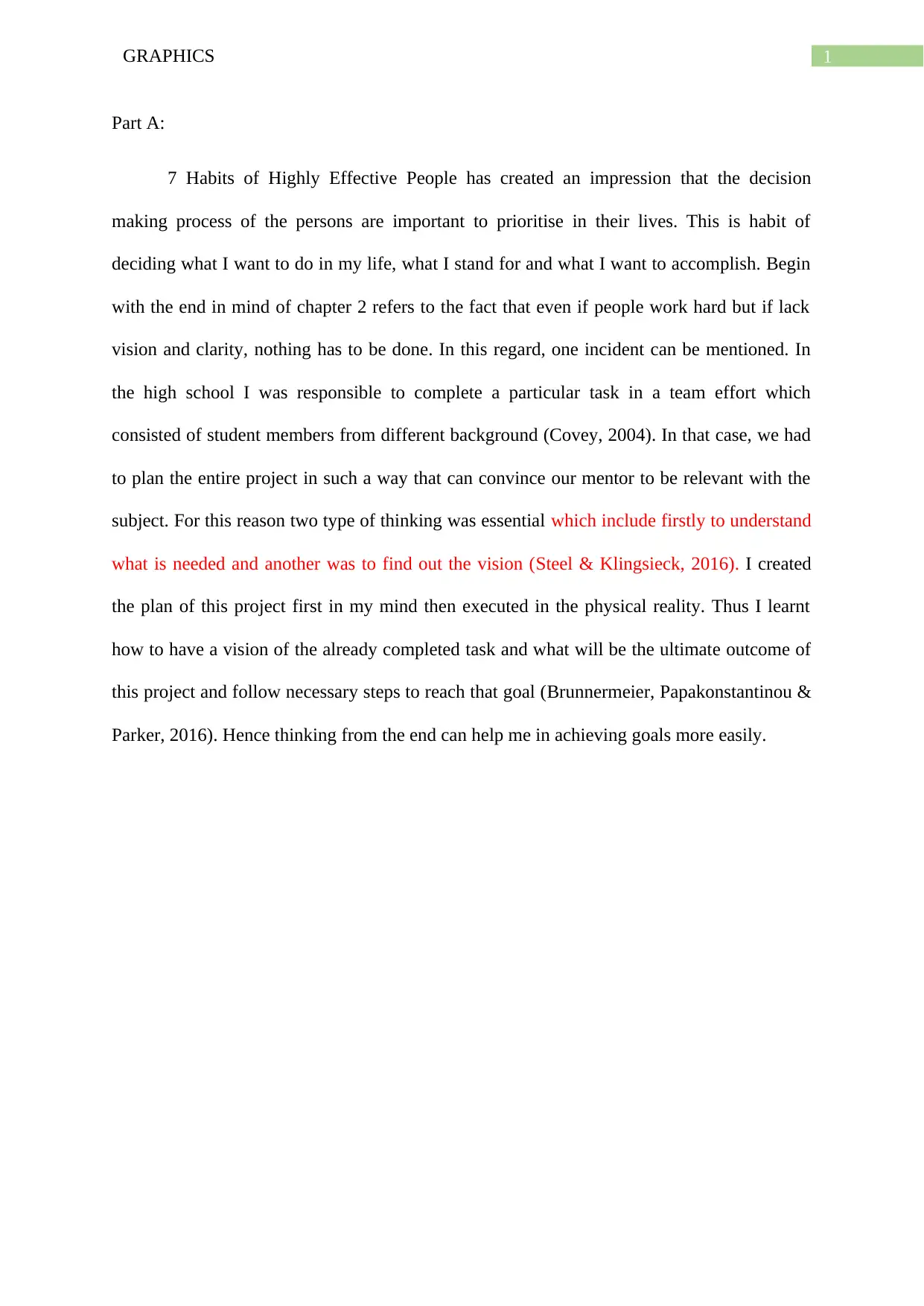
1GRAPHICS
Part A:
7 Habits of Highly Effective People has created an impression that the decision
making process of the persons are important to prioritise in their lives. This is habit of
deciding what I want to do in my life, what I stand for and what I want to accomplish. Begin
with the end in mind of chapter 2 refers to the fact that even if people work hard but if lack
vision and clarity, nothing has to be done. In this regard, one incident can be mentioned. In
the high school I was responsible to complete a particular task in a team effort which
consisted of student members from different background (Covey, 2004). In that case, we had
to plan the entire project in such a way that can convince our mentor to be relevant with the
subject. For this reason two type of thinking was essential which include firstly to understand
what is needed and another was to find out the vision (Steel & Klingsieck, 2016). I created
the plan of this project first in my mind then executed in the physical reality. Thus I learnt
how to have a vision of the already completed task and what will be the ultimate outcome of
this project and follow necessary steps to reach that goal (Brunnermeier, Papakonstantinou &
Parker, 2016). Hence thinking from the end can help me in achieving goals more easily.
Part A:
7 Habits of Highly Effective People has created an impression that the decision
making process of the persons are important to prioritise in their lives. This is habit of
deciding what I want to do in my life, what I stand for and what I want to accomplish. Begin
with the end in mind of chapter 2 refers to the fact that even if people work hard but if lack
vision and clarity, nothing has to be done. In this regard, one incident can be mentioned. In
the high school I was responsible to complete a particular task in a team effort which
consisted of student members from different background (Covey, 2004). In that case, we had
to plan the entire project in such a way that can convince our mentor to be relevant with the
subject. For this reason two type of thinking was essential which include firstly to understand
what is needed and another was to find out the vision (Steel & Klingsieck, 2016). I created
the plan of this project first in my mind then executed in the physical reality. Thus I learnt
how to have a vision of the already completed task and what will be the ultimate outcome of
this project and follow necessary steps to reach that goal (Brunnermeier, Papakonstantinou &
Parker, 2016). Hence thinking from the end can help me in achieving goals more easily.
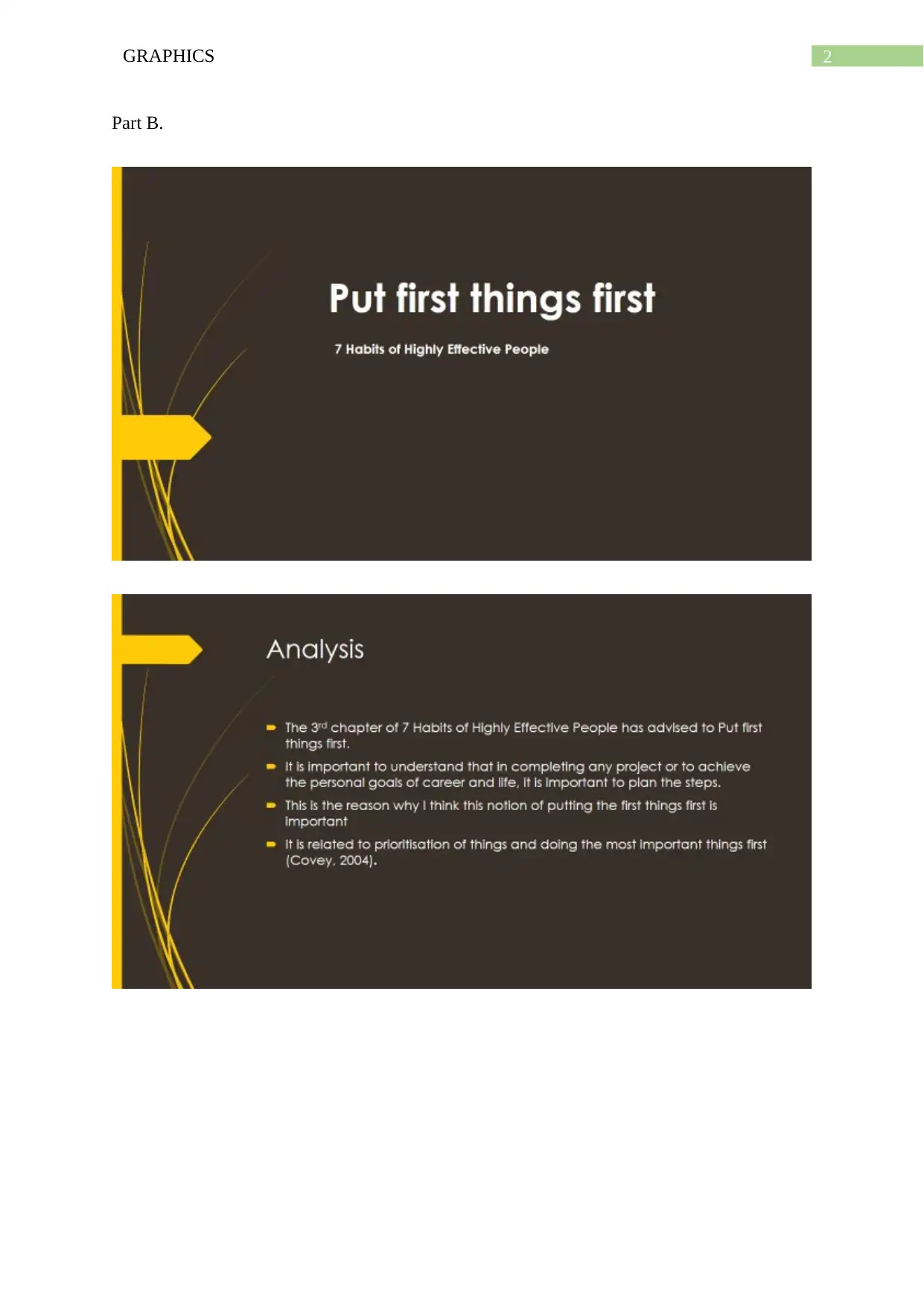
2GRAPHICS
Part B.
Part B.
⊘ This is a preview!⊘
Do you want full access?
Subscribe today to unlock all pages.

Trusted by 1+ million students worldwide
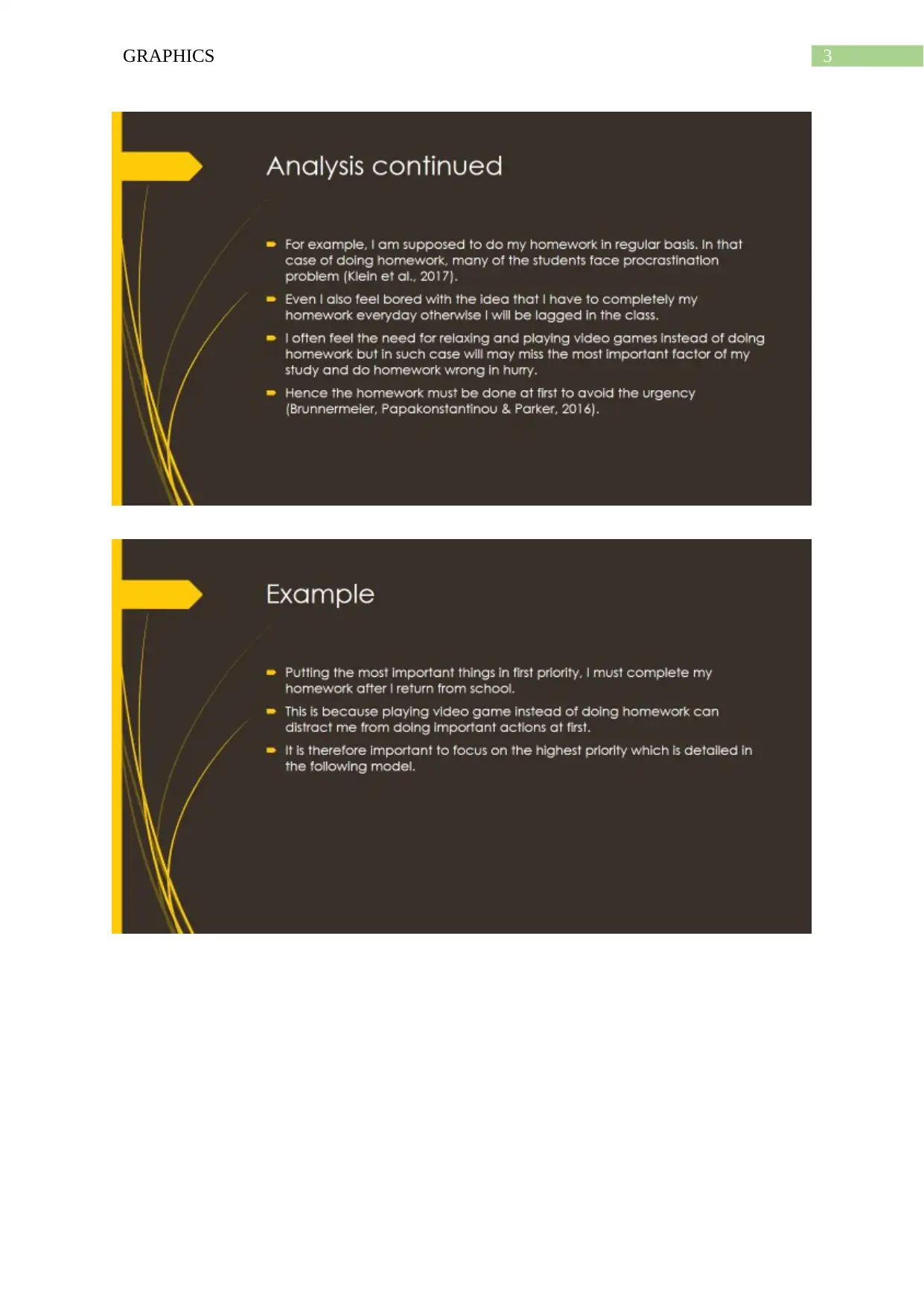
3GRAPHICS
Paraphrase This Document
Need a fresh take? Get an instant paraphrase of this document with our AI Paraphraser
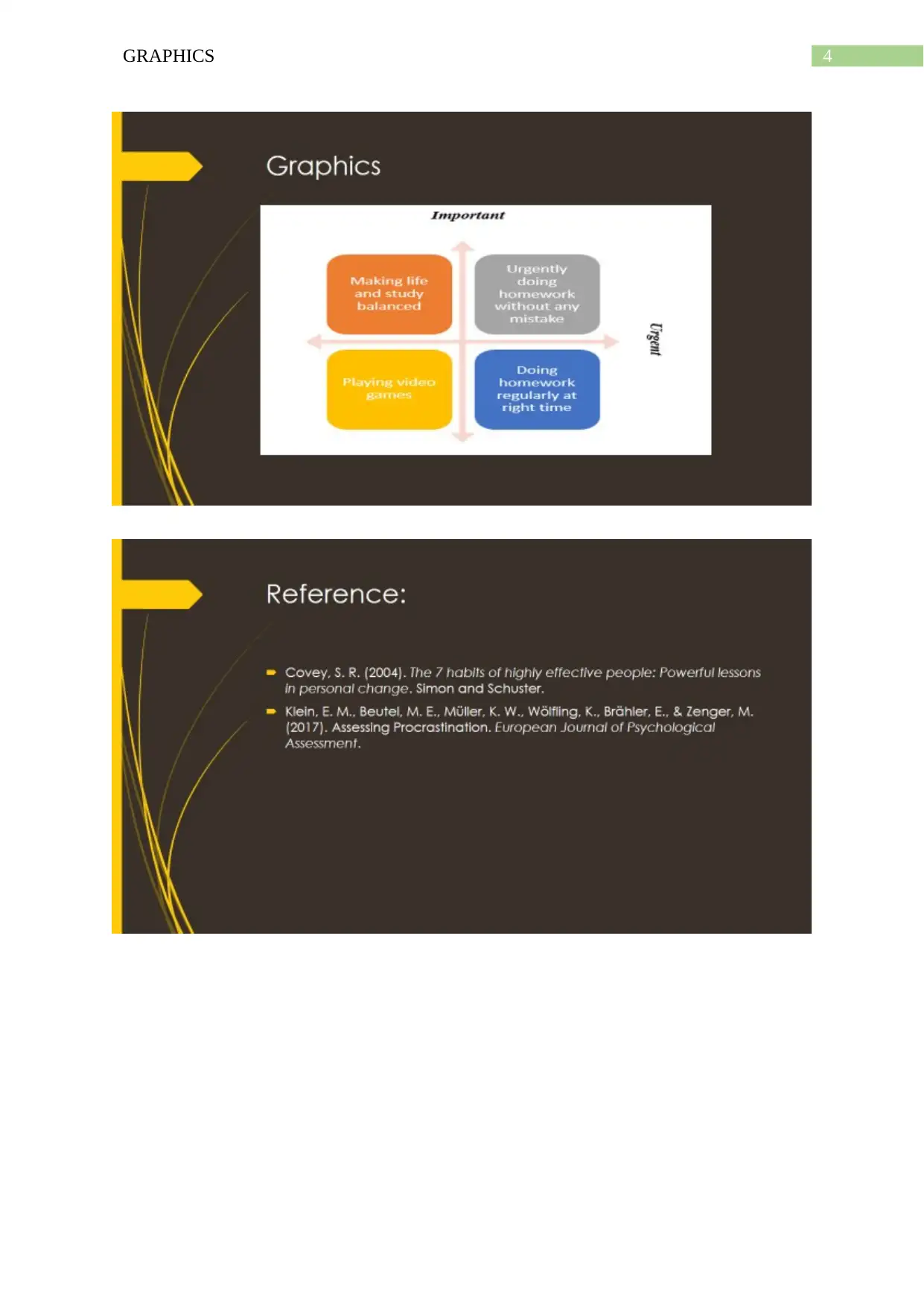
4GRAPHICS

5GRAPHICS
⊘ This is a preview!⊘
Do you want full access?
Subscribe today to unlock all pages.

Trusted by 1+ million students worldwide
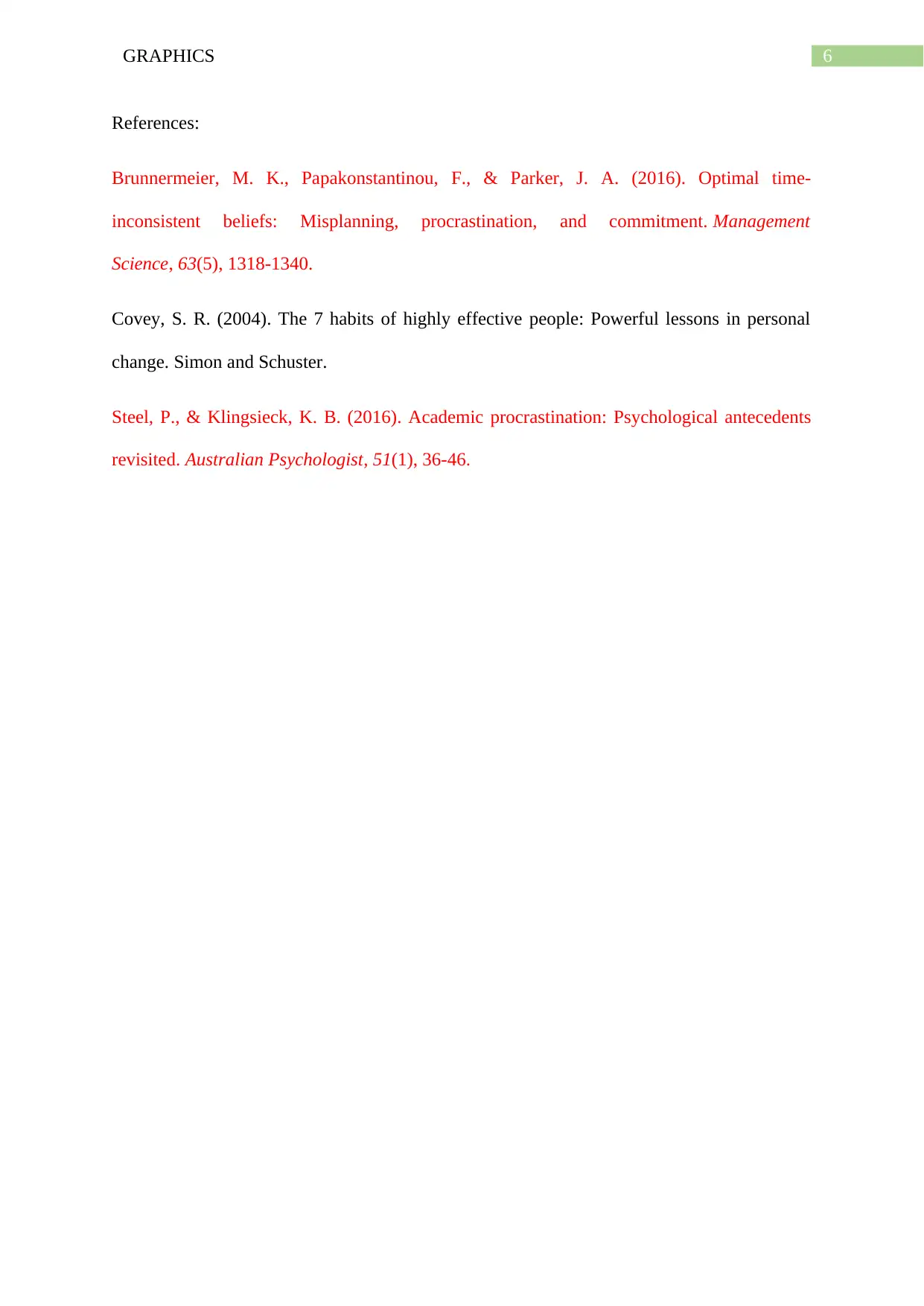
6GRAPHICS
References:
Brunnermeier, M. K., Papakonstantinou, F., & Parker, J. A. (2016). Optimal time-
inconsistent beliefs: Misplanning, procrastination, and commitment. Management
Science, 63(5), 1318-1340.
Covey, S. R. (2004). The 7 habits of highly effective people: Powerful lessons in personal
change. Simon and Schuster.
Steel, P., & Klingsieck, K. B. (2016). Academic procrastination: Psychological antecedents
revisited. Australian Psychologist, 51(1), 36-46.
References:
Brunnermeier, M. K., Papakonstantinou, F., & Parker, J. A. (2016). Optimal time-
inconsistent beliefs: Misplanning, procrastination, and commitment. Management
Science, 63(5), 1318-1340.
Covey, S. R. (2004). The 7 habits of highly effective people: Powerful lessons in personal
change. Simon and Schuster.
Steel, P., & Klingsieck, K. B. (2016). Academic procrastination: Psychological antecedents
revisited. Australian Psychologist, 51(1), 36-46.
1 out of 7
Related Documents
Your All-in-One AI-Powered Toolkit for Academic Success.
+13062052269
info@desklib.com
Available 24*7 on WhatsApp / Email
![[object Object]](/_next/static/media/star-bottom.7253800d.svg)
Unlock your academic potential
© 2024 | Zucol Services PVT LTD | All rights reserved.





